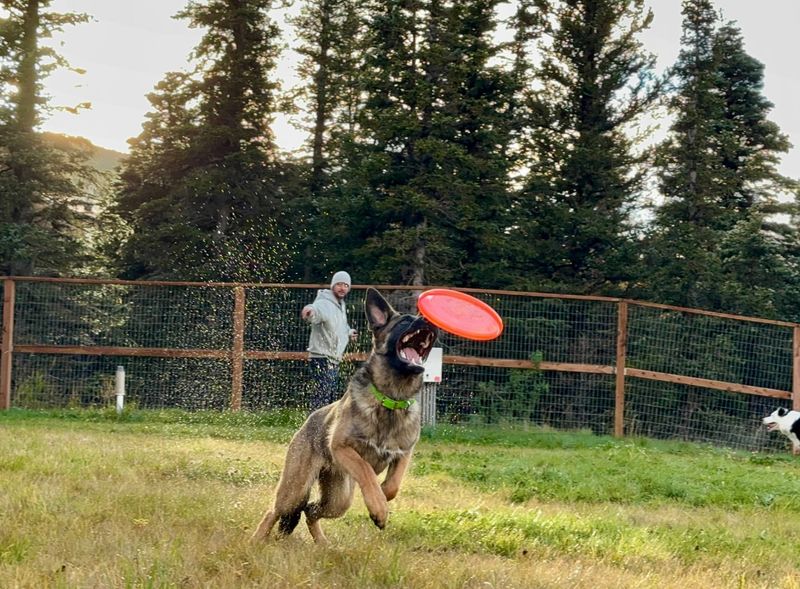📖 Table of Content:
Dogs bring so much love, joy, and companionship into our lives, often becoming cherished family members. As responsible pet owners, it’s our duty to ensure their happiness, health, and overall well-being.
However, without realizing it, we sometimes engage in behaviors that confuse, stress, or even upset our furry friends. These actions, while unintentional, can affect your dog’s trust, behavior, and quality of life.
The good news is that many of these mistakes are avoidable. By understanding what makes dogs uncomfortable and learning to respect their needs, you can create a stronger bond and a more harmonious relationship with your pet.
From respecting their body language to ensuring proper care and socialization, small adjustments can make a big difference. Let’s dive in and see what your dog wishes you knew!
1. Dress Them Up
Dogs, unlike humans, have their own natural coats and often find clothing uncomfortable. While those cute outfits might make for an adorable Instagram post, they can cause unnecessary stress. Many dogs feel restricted when dressed up and may struggle to move freely.
It’s crucial to prioritize their comfort over fashion. If you must dress them up, choose lightweight, non-restrictive clothing, and ensure it’s suitable for the weather.
Remember, your dog is happiest in its natural “birthday suit.”
2. Loud Noises
Loud noises are one of the biggest fears for many dogs. Whether it’s thunderstorms, fireworks, or a noisy vacuum cleaner, these sounds can be terrifying. Your dog may show signs of anxiety, such as trembling, hiding, pacing, or barking uncontrollably.
During such events, provide a safe, quiet, and comforting space. You can use calming sprays, play soft music, or create a cozy area where they feel secure. Understanding and addressing their fears can go a long way in reducing stress.
3. Inconsistent Training
Consistency is key when training your dog. Inconsistent commands, rules, or rewards can leave your dog confused and unsure of what’s expected of them. This lack of clarity can lead to behavioral issues, frustration, and setbacks in learning.
To avoid this, ensure everyone in your household follows the same training methods and rules. Consistent training fosters trust and security, helping your dog learn boundaries and positive behaviors more efficiently.
4. Ignoring Body Language
Dogs primarily communicate through body language. Ignoring their signals can lead to misunderstandings, fear, or even aggression. Signs like a tucked tail, flattened ears, lip licking, or avoiding eye contact often indicate discomfort or stress.
Educate yourself and your family members to recognize these cues. If your dog seems uneasy, give them space or remove the stressor. Respecting their boundaries helps build trust and ensures a harmonious home environment.
5. Overfeeding Treats
Treats are a wonderful way to reward your dog, but overindulging can lead to obesity and related health issues. It’s easy to lose track of how many treats you’ve given, especially when faced with those irresistible puppy eyes.
To keep your dog healthy, set a daily treat limit and choose low-calorie, nutritious options. Treats should complement their regular diet—not replace it. Moderation is key to maintaining your dog’s weight and overall well-being.
6. Neglecting Exercise
Regular exercise is vital for your dog’s physical and mental health. A lack of exercise can result in weight gain, boredom, and destructive behaviors. Dogs need opportunities to burn off energy, explore their surroundings, and stay stimulated.
Incorporate daily walks, interactive games, and playtime tailored to your dog’s breed, age, and energy levels. Exercise not only keeps them fit but also reduces anxiety and strengthens your bond.
7. Skimping on Socialization
Socialization is crucial for a dog’s development. Without it, dogs can become fearful, anxious, or even aggressive in unfamiliar situations. Exposure to new animals, people, and environments builds confidence and helps dogs adapt to life’s challenges.
Introduce socialization gradually and positively. Take your pup to parks, meet other dogs, or attend training classes. Ensuring positive interactions will help your dog grow into a calm and well-rounded companion.
8. Leaving Them Alone Too Long
Dogs are social creatures that thrive on companionship. Leaving them alone for extended periods can lead to separation anxiety, destructive behaviors, and emotional distress. Dogs need mental stimulation and interaction to stay happy and balanced.
If you’re away for long hours, consider hiring a dog walker, using doggy daycare services, or providing interactive toys and puzzles. Prioritizing your dog’s social needs helps maintain their emotional well-being.
9. Neglecting Grooming Needs
Regular grooming is essential for keeping your dog healthy and comfortable. Neglecting it can result in matting, skin infections, overgrown nails, and general discomfort. Grooming involves brushing, bathing, nail trimming, and coat care tailored to your dog’s breed and lifestyle.
A proper grooming routine prevents painful tangles and helps you spot any health concerns like ticks, lumps, or skin issues early. Keeping your dog clean and well-maintained contributes to their overall health and happiness.
10. Using Harsh Discipline
Harsh discipline, such as yelling or physical punishment, can damage the trust between you and your dog. These methods often instill fear and anxiety, leading to behavioral issues and a breakdown in communication.
Positive reinforcement is a more effective and compassionate approach. Reward good behavior with praise, treats, or playtime, and redirect unwanted behaviors calmly. This builds trust and encourages your dog to learn and cooperate willingly.
Your dog relies on you for love, care, and understanding. By avoiding these common mistakes, you’ll create a happier, healthier, and more trusting relationship with your furry companion.
Small changes in how you interact, train, and care for your dog can make a world of difference in their quality of life. After all, a happy dog equals a happy home!










